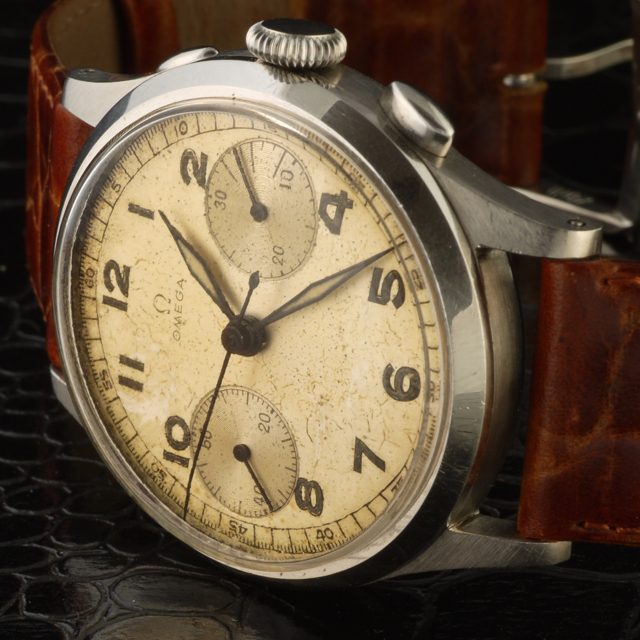
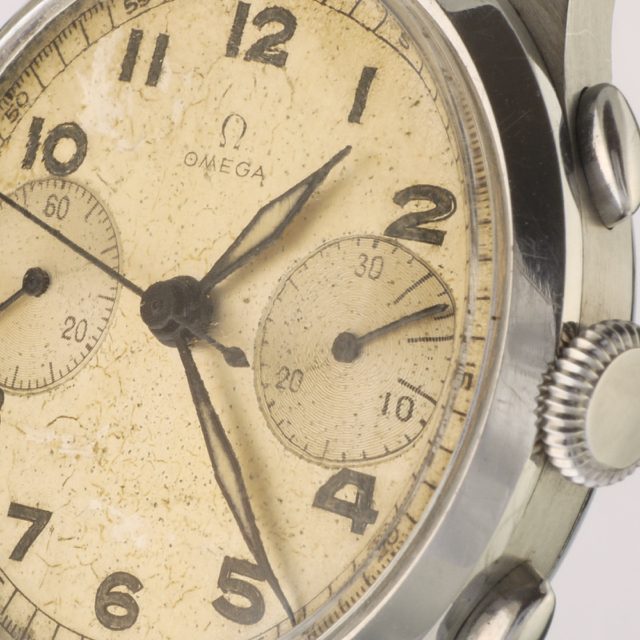
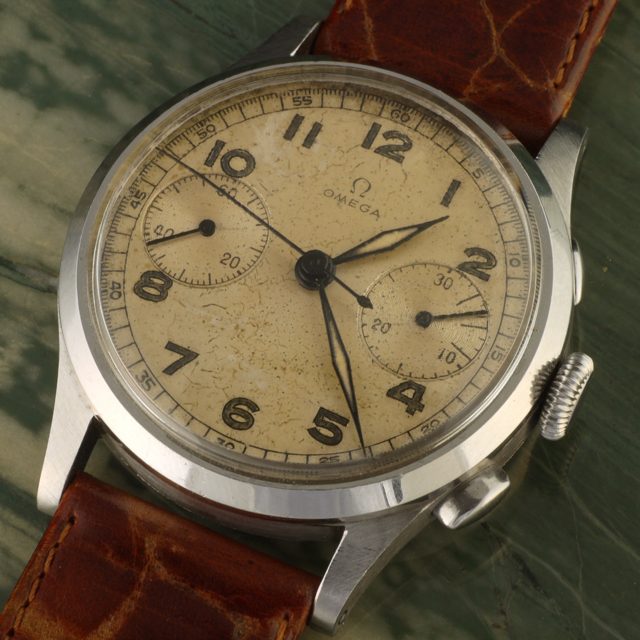
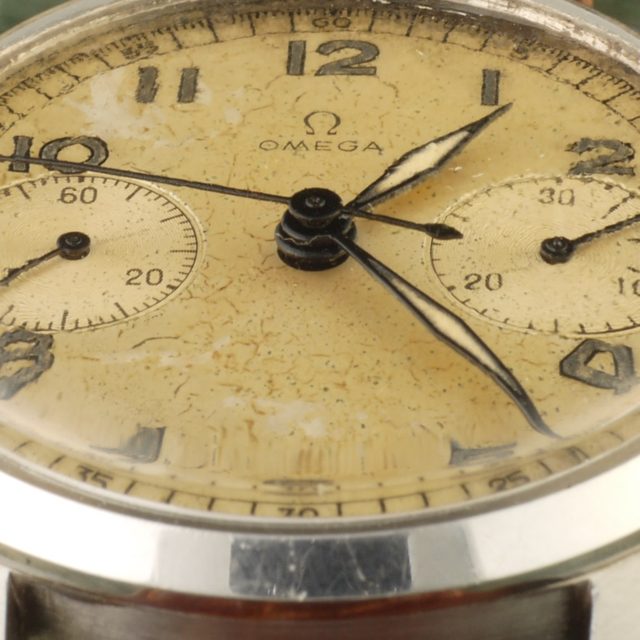
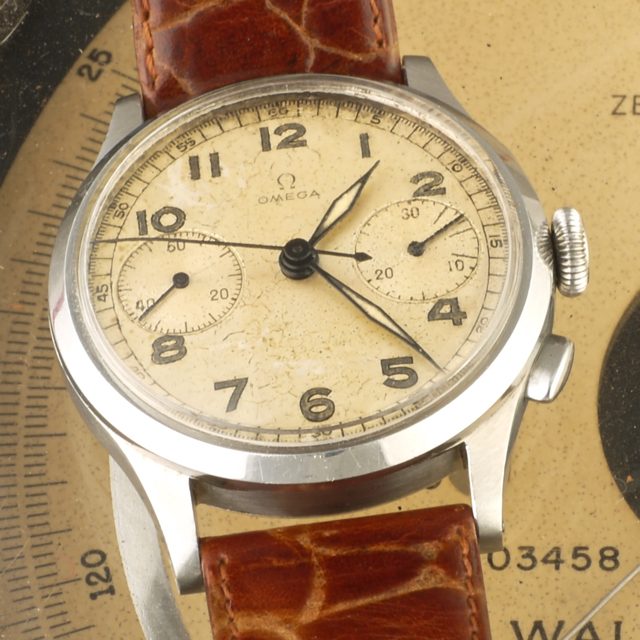
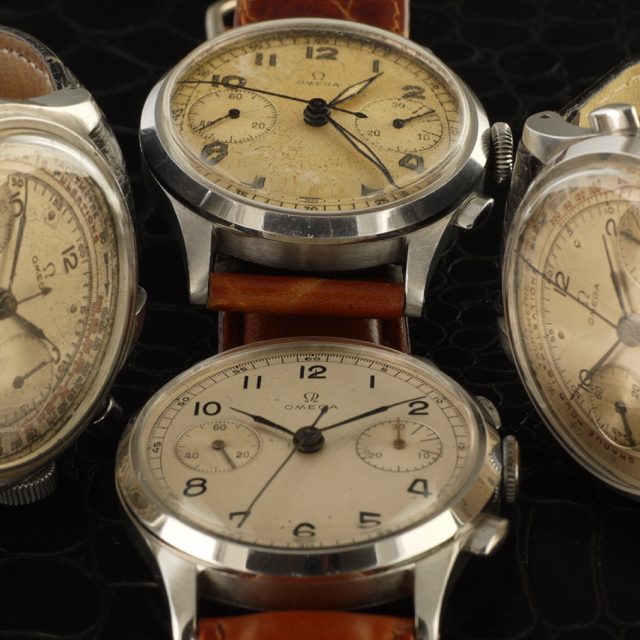
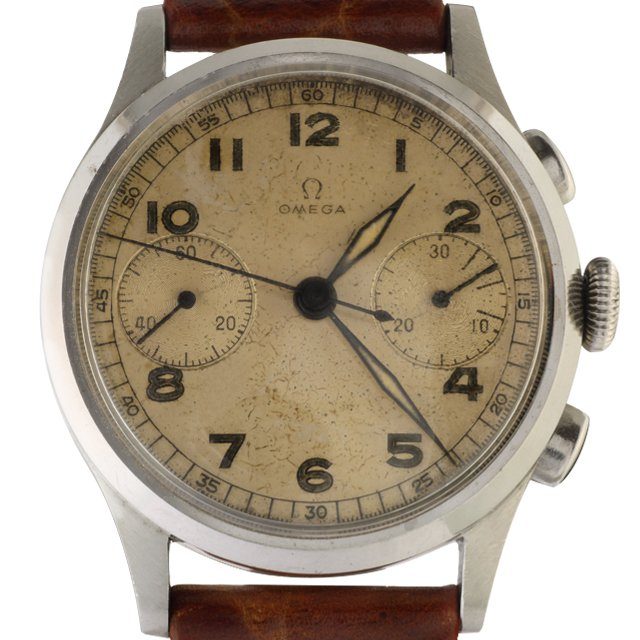
Omega Chronograph
Allies invade Normandy on D-Day1944 Omega Chronograph cal. 33.3, 37.8mm. case, silvered military style dial, luminous Arabic numerals, radium hands and 30 minute counter with 3 minutes indexes for calculating telephone charges, at time billed in 3 minute intervals.
By the end of 1930s, there was a need for more robust and also waterproof watches, so they could be used for military purposes. They were smaller than the pocket watches, and they had larger crowns and pushers. These characteristics made it possible for watches to be worn on the wrist and with gloves.
The Omega cal. 33.3 chronograph series, which is considered to be a forerunner of the Speedmaster, is one of the most sought-after chronographs by Omega. It is said that only 14,000 movements were produced for 20 years.
Omega was founded in 1848 by Louis Brandt at the age of 23. The brand’s reputation grew fast and in 1895 the watches achieved a precision of 30 seconds a day.
By the turn of the 19th century Omega was one of Switzerland’s largest watch companies with 240,000 watches produced annually and employing 800 people.
Omega made its debut in sports during the Gordon Bennett international ballooning Cup in 1917; since then Omega has gone on to be the official timekeeper at 21 Olympic Games.
In 1936 Omega set the remarkable World precision record of 97.8 points at the Kew-Teddington observatory in England.
In 1957, with motorsport in mind, Omega launched the Speedmaster, which in 1965 was chosen by NASA as its official chronometer in Space. Four years later the Moonwatch was the first watch to be worn on the Moon, when on 21st July 1969 Neil Armstrong made his giant leap for mankind. Currently Omega belongs to the Swatch Group.
